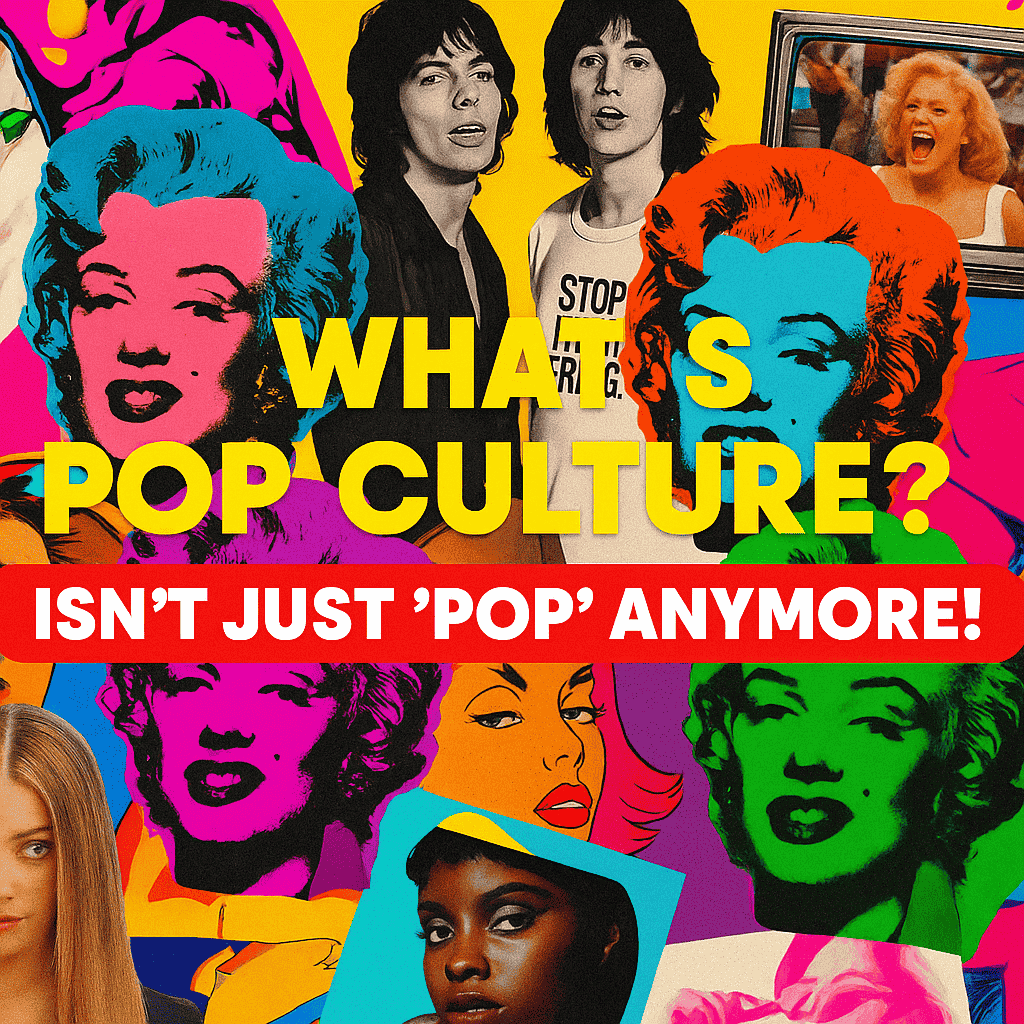What Is Pop Culture? Isn’t Just ‘Pop’ Anymore!

There was a time I thought pop culture was just the stuff you saw on TV or heard on the radio. Growing up, it was boy bands, reality shows, and blockbuster movies. But the more I’ve observed (and worked within) this cultural beast, the clearer it became: what is pop culture isn’t a simple question. It’s a constantly shifting mirror, reflecting whatever society is fixated on right now—and sometimes shaping what comes next.
From Elvis to Emojis: How We Got Here
Ask anyone what pop culture is and you’ll likely get different answers depending on their age. That’s the beauty of it—it evolves. Back in the 50s, it meant Elvis Presley and comic books. In the 80s, it was MTV and Michael Jackson. Today? Pop culture wears many faces—TikTok dances, Marvel multiverses, AI-generated music.
One thing that hasn’t changed? Its ability to sell. Smart marketers learned long ago that tapping into pop culture is like plugging directly into the cultural bloodstream. Brands today are fully aware of this. Platforms like Views4You have leaned into this momentum, enabling creators to boost their visibility and ride trending waves. In fact, over 76% of marketers say cultural relevance significantly boosts engagement, and tools like Views4You are part of that toolkit.
The Ingredients in Today’s Cultural Cocktail
Let’s break it down. What actually makes up modern pop culture?
You’ve got music, film, fashion, memes, social media trends, influencers, viral tweets, video games… and probably a new category that just popped up this morning. It’s not centralized. No one dictates it. That’s the chaos and charm of it.
What’s wild is how participatory it’s become. Pop culture isn’t handed to us anymore—we make it. A random teen’s TikTok can set off a global dance trend. A niche Netflix series can birth a thousand memes. It’s fast, decentralized, and brutally democratic. I once saw a student project on K-pop fandoms that had more cultural depth than half the academic journals on my shelf. That’s where the power lives now.
Algorithms Are the New Cultural Gatekeepers
Here’s where it gets real: what determines what we all talk about? Algorithms.
I remember posting a short clip of a parody skit on Instagram just for fun. Woke up the next morning to 60k views. No hashtags, no strategy. The algorithm just picked it up. That’s the kind of unpredictable, wild ride digital platforms offer now. But it’s also strategic if you know what you’re doing.
To tap into culture today, you need to understand tech. And you need to stay ahead. If you want your content or brand to go viral, relying on luck won’t cut it. You need to be in tune with trends, data, and user behavior. For those looking to dig deeper into emerging tactics and digital influence, I’d suggest you click here to reach more people because 71% of viral content in 2024 is driven by predictive engagement tools and trend mapping. That’s not a fluke, that’s science.
Culture Can Be Cute And Controversial
It’s not all cat memes and catchy dances. Pop culture can get dark, too. It has a tendency to commodify movements, exploit aesthetics, and water down nuance.
Take the conversation around mental health. On one hand, pop culture has helped normalize talking about anxiety, therapy, and trauma. On the other, it’s turned serious diagnoses into hashtags and fashion statements. This double-edged sword has always been part of what makes pop culture so divisive—and so powerful.
Sometimes I feel conflicted myself. I love how open things are now, how accessible. But I also worry about how quickly we consume and discard. A trend lasts a week, a meme dies in a day, and meaningful messages often get buried under the next dopamine hit.
The Way It Shapes Us (Even When We Don’t Notice)
If you’ve ever bought an outfit because someone on your feed wore it, used slang you saw on TikTok, or changed your opinion after a viral thread—congrats, you’ve been shaped by pop culture.
It seeps into everything. Our attention spans, our language, our aspirations. Even the way we understand politics or process grief. I had a student once who couldn’t stop referencing “Euphoria” during her psychology project. At first, I found it odd, but then realized—that’s her cultural lens. That’s how she’s making sense of adolescence and identity.
Where’s It Headed?
More fragmented, more immersive, more tech-heavy. As AI-generated influencers gain traction and VR platforms evolve, we’re going to see a cultural explosion that blends reality with simulation.
You’ll have communities that orbit around digital identities, micro-trends that exist for mere hours, and a whole new level of content personalization. It’s exciting and slightly terrifying. But hey, that’s what pop culture has always been, a wild ride with no brakes.
FAQs
What is pop culture in simple terms?
It’s the collection of ideas, trends, media, and behaviors that are popular in mainstream society at any given time. It reflects what people are watching, talking about, wearing, and sharing.
How does pop culture impact society?
It influences how we think, what we buy, how we speak, and even how we vote. Pop culture often leads the way in social change, especially with topics like diversity, gender, and mental health.
Is pop culture the same everywhere?
Not at all. While global platforms like TikTok and Netflix spread trends worldwide, each country—and even each subculture—has its own version of what is pop culture. Local traditions still shape what becomes popular in different places.